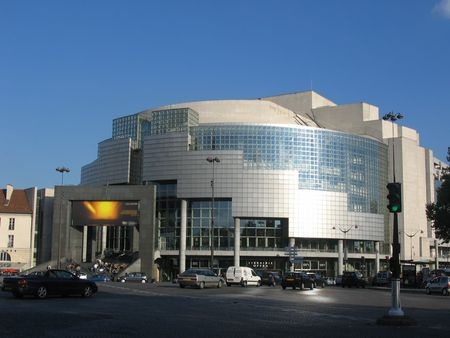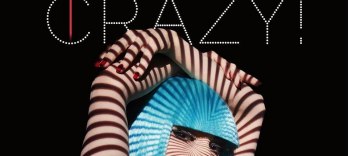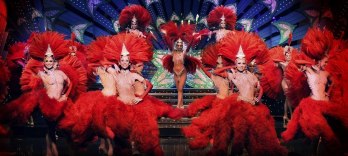Falstaff
September 2024 | ||||||
|---|---|---|---|---|---|---|
Mo | Tu | We | Th | Fr | Sa | Su |
CHARACTERS
Sir John Falstaff: a ruined gentleman, a buffoon and a boaster
Ford: a rich man of Windsor
Alice Ford: Ford’s wife
Meg Page: a friend of Alice
Mrs Quickly: a townswoman of Windsor
Nannetta: Alice and Ford’s daughter
Fenton: in love with Nannetta
Pistola and Bardolfo: Falstaff’s servants
Dr Caius: Nannetta’s unwelcome suitor
First part
Act 1
Doctor Caius accuses Falstaff of having forced his way into his rooms and his two accomplices, Bardolfo and Pistola, of having made him drink in order to rob him. The three accused throw him out. Falstaff realises that he does not have a single penny left and accuses his accomplices of being the cause of his ruin.
He confides in them and presents his latest scheme for obtaining money. He is convinced that Alice Ford and Meg Page, two rich townswomen of Windsor, are both ready to succumb to his charms. He plans to seduce them both and thus restore his finances. He has written each of them a love letter which he asks Bardolfo and Pistola to deliver. The latter, invoking their honour, refuse to serve as go-betweens. Falstaff, in a mighty tirade, launches an attack on honour, this vain notion that does nothing to feed a man, before dismissing his servants.
Alice Ford and her daughter Nannetta meet Mistress Quickly and Meg Page. Alice informs them that she has received a love letter. Exchanging their letters, the two women discover that they are identical. They immediately decide to take their revenge.
Ford arrives in the company of Caius and young Fenton along with Bardolfo and Pistola, who have decided to take their revenge on Falstaff for dismissing them. Men and women alike devise their own plans for revenge. Nannetta and Fenton, who are secretly in love, take advantage of the situation to exchange tender kisses.
Second part
Act 2
Mistress Quickly arrives claiming to bear messages from Alice and Meg. She announces to Falstaff that Alice, in her husband’s absence, awaits him that very afternoon. Falstaff is full of himself. In spite of his age and portliness, women are still ready to risk everything for him. Ford in turn comes to visit Sir John under a false identity. He claims to be in love with the beautiful Mrs Ford whose virtue is such that all attempts at seduction are in vain. Should Falstaff manage to seduce her, then he too might have some cause for hope, since “one slip may lead to another…”.
Falstaff then reveals to him that he has already made substantial progress. Ford is convinced that his wife has betrayed him. Scarcely controlling himself, he remains alone and curses all women in a ferocious monologue. The four women fix the final details of their revenge.
Nannetta is sad: her father wants her to marry Doctor Caius. Her mother and friends swear to prevent the marriage. Falstaff arrives with a flood of gallant remarks and cooing. Meg bursts in pretending to be anxious and announces that Ford has had wind of the rendezvous and is on her heels. Mistress Quickly in turn arrives. It is no longer a joke: Ford really is about to arrive.
They hide Falstaff behind a screen at first and then in a laundry basket. Ford, followed by Caius, Bardolfo, Pistola and several neighbours move heaven and earth to chase out the suitor, whilst Nannetta and Fenton take advantage of the situation to hide behind the screen. The sound of a rather noisy kiss attracts the attention of Ford, who discovers the lovers. Ever angrier, he continues his search throughout the house. Alice returns accompanied by several servants whom she requests to throw the laundry basket through the window. When Ford reappears, he discovers Falstaff splashing around in the Thames.
Third part
Act 3
Falstaff ruminates grimly on the wickedness of the world. Mistress Quickly arrives and explains that he is a victim of circumstances and that Alice is truly sorry about the outcome of the adventure. She hands him a note from Alice proposing a midnight rendezvous at Herne’s Oak. He is to go disguised as the Black Huntsman. Alice explains to her friends how she intends to use the legend of the Black Huntsman to take her revenge on Falstaff.
Each of them has a role to play in the comedy. Ford hopes to take advantage of the circumstances to force Nannetta into a trap and oblige her to marry Caius. Alice dresses Fenton in the same disguise as Caius. As midnight chimes, Falstaff enters, dressed as the Black Huntsman. He begins to court Alice but frightening sounds are heard. Pretending to be afraid, Alice flees. The Queen of the Fairies appears (Nannetta in disguise) and summons the spirits. Terrified, Falstaff throw himself to the ground face down.
All the townsfolk of Windsor arrive disguised as fantastic creatures. They jostle and abuse Falstaff in order to force him to beg pardon for his faults. Suddenly recognising Bardolfo, Falstaff realises that he is once again the victim of a farce. Ford announces that the wedding of the Queen of Fairies is to crown the festivities.
However, two couples, dressed and masked identically, ask for his blessing. When the masks fall, Caius discovers that he has just married Bardolfo, whilst Ford realises that he has just handed over his daughter to Fenton. Ford can but forgive the lovers, and Falstaff concludes, followed by the other characters in chorus, that “Everything in the world’s a jest”.
Program and cast
Lyric commedy in three acts (1893)
After The Merry Wives of Windsor and scenes from Henri IV by William Shakespeare
Creative team
Giuseppe Verdi - Music
Arrigo Boito - Libretto
Michael Schønwandt - Conductor
Alessandro Di Stefano - Chorus master
Dominique Pitoiset - Director
Alexandre Beliaev - Set design
Elena Rivkina - Costume design
Philippe Albaric - Lighting design
Christophe Pitoiset - Light adaptation
Cast
Ambrogio Maestri - Sir John Falstaff
Olivia Boen - Mrs Alice Ford
Marie-Andrée Bouchard-Lesieur - Mrs Meg Page
Andrei Kymach - Ford
Gregory Bonfatti - Dottore Cajus
Marie-Nicole Lemieux - Mrs Quickly
Iván Ayón-Rivas - Fenton
Federica Guida - Nannetta
Nicholas Jones - Bardolfo
Alessio Cacciamani - Pistola
Language : Italian
Surtitle : French / English
Paris Opera Bastille

RM Europa Ticket GmbH is an officially accredited ticket reseller of/by Opera National de Paris.
Agency number: 4848428
Opéra Bastille
A great modern theatre
The Opéra Bastille is the work of the Canadian-Uruguayan architect Carlos Ott, who was chosen in November 1983 after an international competition that attracted entries from some 1,700 architects. The theatre was inaugurated on July 13th 1989.
Its architecture is marked by transparent façades and by the use of identical materials for both the interiors and the exteriors.
With its 2,700 acoustically consistent seats, its unique stage facilities, its integrated scenery, costume and accessory workshops, as well as its numerous work areas and rehearsal rooms, the Opera Bastille is a great modern theatre.
Stage facilities
Orchestra pit, mobile and adjustable, can be covered; at its largest it can house 130 musicians
Main stage, 45 m high, 30 m wide, 25 m deep, made up of 9 elevators allowing several levels to be created and supported by three main elevators, which bring scenery up from below stage
Clearing zones, 4 storage areas with the same dimensions as the stage
Backstage area, with its scenery turntable
Circulation area, scenery temporarily stored between the stage, workshops and rehearsal stage
Rehearsal stage, the Salle Gounod, with its orchestra pit and dimensions identical to those of the main stage
The building
Area at ground level: 22,000 m²
Floor area: 160,000 m²
Total height: 80 m (including 30 m below street level)
The auditoriums
The main auditorium
Area: 1,200 m², 5% of the total for the building
Dimensions: 20 m high, 32 m deep, 40 m wide
Number of seats: 2,703
Materials: blue granite from Lannelin in Brittany, pearwood from China, glass ceiling
The amphitheatre
Area: 700 m²
Depth : 21.4 m
Number of seats : 450
Materials: white breccia marble from Verona, staff ceiling
The Studio
Area: 280 m²
Depth: 19,5 m
Number of seats: 237
Materials: white breccia marble from Verona and pearwood
Performances: Mo 20 May 2024,
Performances: Th 23 May 2024,
Performances: Su 19 May 2024,
Performances: Su 26 May 2024,
Performances: Mo 20 May 2024,
Performances: Su 19 May 2024,

 EN
EN DE
DE IT
IT FR
FR ES
ES RU
RU JP
JP RO
RO
 Seating plan
Seating plan 




